 Sign in
Sign in
Arts
Business
Sourcing Journal
Sourcing Journal Radio is thought leadership brought to life. Each podcast episode provides apparel industry executives with a platform from which to showcase their personalities and share their perspectives on a range of engaging topics, enabling listeners to consider new points of view and plot their next steps.

Improving Efficiency Amid Factory Consolidation
The future of the supply chain may be driven by consolidation as Covid-19 fueled bankruptcy hits more manufacturers and suppliers. But even if more factories close, the challenges apparel retailers and brands have faced in gaining visibility over their processes can be overcome if they’re willing to get as close to the source as possible.
Jose Suarez, founder and CEO of Vaēso, a comprehensive digital shop floor execution system providing real-time visibility to the shop floor including work in progress, says that while consolidation concerns are real, retailers and brands still have ample room to improve productivity within their factories.
In fact, Suarez believes that these companies can double the rate of output within their factories with the same labor and overhead. Listen to this conversation to hear why Suarez says retailers and brands must get more involved in managing factory efficiency and quality.
Learn more about your ad choices. Visit megaphone.fm/adchoices
12:3017/11/2020

Sustaining Voices Podcast: What is the Fashion Industry Getting Wrong About Transparency and Traceability?
The fashion supply chain is infamously opaque, but brands and retailers are increasingly heeding calls for greater transparency and traceability that gets to the heart of their social and environmental impact.
The shift can’t come soon enough. According to a 2019 survey by Ipsos MORI, four in five Americans want fashion brands to provide more information about their environmental commitments and the measures they are taking to curtail pollution in their supply chains. Roughly three quarters believed that brands should be responsible for what happens in the manufacturing process, and that they need to take appropriate action to ensure clothes are produced in an environmentally friendly way.
Similar studies show that consumers not only value information related to a company’s supply chain, but many are in fact prepared to pay a premium for greater transparency and visibility.
In this episode of the Sustaining Voices podcast, Sourcing Journal sustainability reporter Jasmin Malik Chua speaks with Jamie Barsimantov of SupplyShift, an end-to-end supply chain data management, responsible sourcing and supplier engagement platform, and Tai Ford, chief marketing officer at Retraced, a transparency solution that enables fashion brands to visualize, verify and communicate their supply chains, about the importance of transparency and traceability, the reasons behind their growing prominence and the obstacles that stand in the way of ensuring a socially and environmentally just industry.
Though traceability and transparency are sometimes interchangeably used, they’re not the same, and “we need to separate that,“ Barsimantov said, though he admits that because people have their own definitions, the confusion isn’t going to go away. With transparency, “we usually think of a brand lifting the veil off where their manufacturing sites are and information about their practices,“ he said. “When people say full traceability, they’re usually talking about where this bit of cotton came from versus that bit of cotton, which is extremely challenging, expensive and in some cases, doesn’t even provide the right information to provide that transparency to the consumer.“
Traceability and transparency don’t make a brand more sustainable, but they’re a “means to help you along that journey,“ Ford said. “Traceability doesn’t necessarily say that you have sustainable materials in your supply chain, but [it] at least gives you points of reference to then set to start action plans and to communicate those action plans... with people in your company, other certification agencies and other members of your supply chain.“
Listen more to the podcast to learn how much of the fashion supply chain we can confidently map, if some materials are easier than others to track, how much transparency and traceability efforts might cost and how calls from governments and human-rights groups to divest from the Xinjiang Uyghur Autonomous Region will impact the cotton supply chain.
Learn more about your ad choices. Visit megaphone.fm/adchoices
30:4727/10/2020

Sustaining Voices Podcast: Is "Carbon Neutrality" in Fashion Green or Greenwashing?
Carbon neutral. Climate positive. Carbon negative. Net zero. Today, it's no longer enough for an environmentally conscious brand or retailer to simply be "sustainable." And no wonder: The fashion industry is responsible for anywhere between 4 percent to 10 percent of the world’s carbon emissions, depending on the source—too much, no matter how you look at it.
But what do these terms mean, exactly? What is this "hierarchy of mitigation" companies like Gucci are talking about? And are businesses, by purchasing offsets to neutralize their emissions, simply "paying to pollute"?
In this episode of the Sustaining Voices podcast, Sourcing Journal reporter Jasmin Malik Chua speaks with Pauline Op de Beek, who engages with the apparel sector for The Carbon Trust and Saskia van Gendt, head of sustainability at Rothy’s, about fashion's burgeoning impact and the role that carbon neutrality can play in promoting a planet-friendlier fashion.
Indeed, carbon neutral declarations have ramped up over the past couple of years. H&M wants to become climate positive by 2040; the G7 Fashion Pact, a coalition of 150 brands, from Adidas to Prada, have pledged to collectively achieve net-zero emissions by 2050; and Allbirds slapped a carbon tax on itself to neutralize its own footprint. There’s a reason for this trend.
“I think carbon neutral declarations are, in part a response to the urgency of climate change, but also the increased awareness around fashion’s footprint,” van Gendt explained. “And in the past, I think companies could be wasteful because there was no reason for them not to be—the awareness was low. But now both consumers and companies themselves are becoming much more aware of fashion’s footprint.”
At the same time, brands and retailers should be careful of brandishing the term like a talisman that solves all of fashion's ills. “I think the main thing is that it is part of a wider strategy,” Op de Beek said. Carbon, she noted, is not the be-all and end-all of a sustainability strategy. “In and of itself, it is a continuously evolving process where companies move to reduce their emissions year on year,” she added. “[But it is also about] driving change throughout the supply chains and changing the way we interact with our apparel when it comes to the use and end of life. And that kind of business change is what we really need to focus on.”
Learn more about your ad choices. Visit megaphone.fm/adchoices
21:4815/09/2020

Sustaining Voices Podcast: What Should a Post-Pandemic Supply Chain Look LIke?
The COVID-19 crisis has resulted in a period of unprecedented upheaval for the retail industry, which has fielded a battery of hits due to shuttered storefronts, retreated foot traffic, shrinking discretionary incomes and mounting economic uncertainty. Brands and retailers have to contend with collapsing revenues, rent payments and mountains of unsold merchandise. Does something need to change?
In this episode of the Sustaining Voices podcast, Sourcing Journal reporter Jasmin Malik Chua speaks with Gregory Schlegel, founder of the Supply Chain Risk Management Consortium, and Nikki Baird vice president of retail innovation at Aptos, about how the retail supply chain can adapt to a post-pandemic landscape that will look markedly different from the one that came before.
Inventory and pricy real estate have long been two of retail’s biggest albatrosses, but they haven’t changed because there’s been little motivation to change them. COVID-19, however, is presenting them through a fresh lens. “Those are the places where the pain is the greatest right now,” Baird said. “There’s a lot of, ‘Well, we’ve always done it that way’ in the apparel supply chain, but the pandemic has really exposed the weaknesses in the way we’ve always done it.”
Brands and retailers, for one, can no longer muddle along with the limited visibility they’ve always had, Schlegel said. “The retail supply chain is in need of massive investments in people, flexibility, visibility and automation to survive, thrive and become more resilient,” he said. “As retail and apparel move through COVID-19, [they can’t bring] these historical supply-chain inefficiencies along with them.”
Before the pandemic, fashion businesses were experimenting with inventory-less stores that trafficked in experiences and branding rather than saleable merchandise. The pandemic may accelerate such innovations, including those borne out of necessity, such as buy online, pick up in store and enhanced ecommerce platforms punched up by video-enhanced bells and whistles and personalized assistance. Many of these changes are likely to have staying power, and as the borders of online and offline begin to blur, consumers will increasingly look to stores—even physical ones, whenever they reopen—to be more than repositories of merchandise.
“There’s no future for stores, whether they have inventory or not, without that aspect of entertainment or expertise or some kind of guidance or interaction,” Baird said.
Learn more about your ad choices. Visit megaphone.fm/adchoices
31:2427/07/2020

Biosynthetics vs. Natural Fibers: What Makes a Sustainable Material Sustainable?
Sustainable sourcing begins with raw materials. Experts agree that a “sustainable materials mix” should be a priority for the fashion industry because they can reduce its reliance on fossil fuels, pare back water and carbon footprints and pose less of a burden at the end of their lives. But what makes a material sustainable? And should we look to the past or the future for answers?
In this episode, Sourcing Journal reporter Jasmin Malik Chua speaks with Rebecca Burgess, executive director, and Jason Kibbey, CEO of Higg Co., about how novel materials such as synthetic spider silk derived from yeast stack up against agricultural systems both conventional and “regenerative.”
“I would say we’re at the very earliest phase of this and few of the new, interesting and exciting materials have come to scale,” Kibbey said. “But we also have to support innovation and try to find these new materials that do reduce impact, and do allow us to give optionality in a changing world.”
Burgess cautions, however, that the current regulatory system is ill-suited to managing the growth of synthetic biology and its waste streams. “I think...we have is a history of launching things into our biosphere, without having measurement frameworks or scientific analysis about potential impacts to dynamic ecosystem function,” she said. “So I have concerns and I'm not the only one.”
Regenerative agriculture, she explains, increases soil fertility and biodiversity, helps with sequestration of atmospheric carbon and helps the land “self-renew without synthetic inputs...just the magic of biology.”
Kibbey agrees that a balance between old and new is necessary to clothe the people of the future. “It’s very important that we both have to support innovation and support new ways to look at clothing...but we also have to be very careful of the unintended consequences of those materials as we develop them...and carefully try to understand and reduce or ideally eliminate those unintended consequences.”
Learn more about your ad choices. Visit megaphone.fm/adchoices
37:0722/07/2020

Rivet 50 Radio: Adriana Galijasevic
G-Star RAW's denim and sustainability expert, Adriana Galijasevic, has a wealth of knowledge she wants to share with the industry.
Learn more about your ad choices. Visit megaphone.fm/adchoices
17:1505/07/2020

The Pandemic Demands 'Immediate and Bold' Action
While the ultimate impact of COVID-19 won’t be known for years, apparel has already begun to assess the damage, as businesses across the value chain chart a course through the pandemic. From a rocky start filled with cancelled orders and fractured relationships, the industry is now looking ahead to the initiatives, technologies and culture shifts that could finally transform it.
In this episode of Sourcing Journal Radio, Steve Hoffman, partner at McKinsey, discusses the results of an industry-wide survey the consulting firm conducted in collaboration with Sourcing Journal. The findings, which were published in the company’s report “Time for Change: How to use the crisis to make fashion sourcing more agile and sustainable,” details the damage that’s already been done to liquidity and partnerships as well as how fashion firms plan to battle back—and the likelihood that they’ll successfully achieve their goals.
While the survey found that the pandemic may be the catalyst for the industry to finally put initiatives like speed and flexibility in place, Hoffman says, the landscape is likely to be bifurcated, with those he dubbed “immediate and bold” as the winners.
“The new normal is really what's going be a key factor here, because if in the new normal certain things play out such as a reduced assortment… that will help accelerate speed and flexibility because the complexity of doing that will be a lot easier," he said. "There's a couple of factors that we would wait to see if they could be enablers, but by and large, you're going to see the retailers or apparel wholesalers who are currently more advantaged, probably more advantaged coming into the crisis, that will be able to sort of double or triple down on those speed and flexibility aspirations. And I would say the vast majority the industry will sort of be left a little bit behind, and maybe doing a handful or a more limited kind of speed and flexibility push, but I think will be far outpaced by the folks that are more advantaged.”
For the time being though, Hoffman said the winners will be those that quickly pull back and focus on managing cash in the short term before aggressively jumping on new opportunities once the dust settles.
Listen to the episode to learn more about how retailers can overcome the “distracting” financial concerns that might make them hesitate rather than move forward, the root causes holding much-needed initiatives like on-demand manufacturing back and why funding sustainability will continue to be a challenge.
Learn more about your ad choices. Visit megaphone.fm/adchoices
20:4230/06/2020

Rivet 50 Radio: Roian Atwood
Kontoor Brands senior director of global sustainable business Roian Atwood is somewhat of a wonk for denim sustainability.
Learn more about your ad choices. Visit megaphone.fm/adchoices
24:1701/06/2020

Rivet 50 Radio: Sarah Ahmed
Warp + Weft founder Sarah Ahmed talks inclusivity and building a direct-to-consumer.
Learn more about your ad choices. Visit megaphone.fm/adchoices
34:2001/06/2020

Rivet 50 Radio: James Bartle
Outland Denim founder James Bartle dishes about his decision to dabble in crowdfunding.
Learn more about your ad choices. Visit megaphone.fm/adchoices
28:2519/05/2020

Rivet 50 Radio: Jason Denham
Jason Denham, founder of Denham, talks quality, premium jeans and preparing for pandemics.
Learn more about your ad choices. Visit megaphone.fm/adchoices
28:0119/05/2020

Sustaining Voices Podcast: Trimming Back Fashion's Waste Problem
Fashion needs to rethink its take-make-dispose model.
With the COVID-19-stalled supply chains exacerbating the millions of tons of of textile waste produced every year, keeping clothing out of the landfill has become more vital than ever.
In the this episode of the Sustaining Voices podcast, Sourcing Journal reporter Jasmin Malik Chua speaks with Gwen Cunningham, lead of the Circle Textiles program at Circle Economy, andJonas Eder-Hansen, public affairs director at Global Fashion Agenda, about what the industry needs to do to prevent textiles from becoming waste, the close interrelationship between consumption and disposal practices and why investing in recycling alone isn’t the answer.
“We’ve seen the consumer, between 2007 and 2014, buying 60 percent more and keeping the clothing for half as long as they used to,” Cunningham said. “And so these materials are becoming post consumer quicker than ever before.”
While textile waste can be broadly categorized into two streams—pre-consumer and post-consumer—tackling the problem requires multi-pronged approach. Waste is a symptom of an issue that requires new design approaches, life-extending business models such as repair and resale, and beefed-up infrastructure for end-of-life management.
Policy, too, isn’t emphasized in discussions nearly enough.
“I think the role of policymakers in actually addressing textile waste is something that hasn't really been accounted for,” Eder-Hansen said. "The ability to actually engage in constructive dialogue with policymakers is something that many brands and retailers have shied away from because policymakers are seen as to impose further regulation. But if you turn that around, policymakers can also help accelerate and shift the transition to the circular economy, including also scaling up some of those technologies that are necessary to address textile waste.”
Learn more about your ad choices. Visit megaphone.fm/adchoices
42:5112/05/2020

CPOs on Creating Sustainable Sourcing at Scale
Sustainability has moved from the sidelines to the center of the conversation but even so, the apparel industry is facing so many headwinds, it’s fair to wonder how and if the C-suite can and will prioritize true change in this area. In this episode, Karl-Hendrik Magnus and Sara Kappelmark, apparel industry experts from McKinsey & Company, discuss the McKinsey Apparel CPO Survey, which revealed purchasing officers’ plans for creating sustainable sourcing at scale.
Learn more about your ad choices. Visit megaphone.fm/adchoices
23:4526/03/2020

Developing a Sustainable Mindset
Talking about the state of today’s apparel industry without focusing on sustainability is impossible. After years of poor, inefficient practices, marked by the rise of fast fashion, the industry is now struggling with nearly every aspect of sustainability—how to make less, what to consider while making it, what to do with it at the end of its life, and how to even define what sustainability should look like.
And although we’re seeing more technologies that promise to improve things, advancing sustainability is more than just installing new tech or even fixing legacy production processes.
In this episode, we’re going to talk with the co-founder of a tech company who believes sustainability is really a holistic mindset that companies need to adopt throughout their entire operations—starting with the very top of the C Suite.
Learn more about your ad choices. Visit megaphone.fm/adchoices
15:1820/12/2019

Sourcing in an Uncertain Geopolitical Landscape
For the past year, the apparel and footwear industries have been on edge as tranche after tranche of tariffs have been placed on goods coming out of China. And while our industries had largely been spared, consumers are likely to feel the full brunt of the impact starting with Spring ’20 goods. In response to the uncertainty and hit to the bottom line, brands and retailers have been searching for production alternatives around the globe. And while many are trying out new destinations, most would agree that nowhere compares to China.
In this episode, which is sponsored by Texworld USA, Ron Sorini, principal at the Sorini, Samet & Associates law firm, and Jonathan Gold, vice president for supply chain and customs policy for the National Retail Federation, discuss how apparel firms are adapting to this new normal, the ways in which they could potentially mitigate the tariff impacts and whether it's possible to create a tariff-proof sourcing strategy today.
Learn more about your ad choices. Visit megaphone.fm/adchoices
28:3709/12/2019

Blockchain Explained: How TextileGenesis Wants to Solve Fiber Authentication
Blockchain is—finally!—evolving from buzzword to mainstream terminology, but that doesn’t mean it isn’t saddled with confusion.
In the latest episode of Sourcing Journal Radio, SJ founder and president Edward Hertzman sits down with Amit Guatam of TextileGenesis to learn how the technology can be used to authenticate fibers, which—for as long as clothing has been sold—has been nearly impossible to do.
TextileGenesis’s traceability platform was designed specifically for the apparel industry. It intends to provide transparency into the entire supply chain—from fiber to finished product—thereby helping companies advance their sustainability goals. In his chat, Guatam breaks down, in the simplest terms as possible, exactly what blockchain is and why the digital ledger technology is so valuable for fiber authenticity.
It’s so meaningful, in fact, that Guatam believes that it will change the way supply chain partners interact and the level of trust that exists between them. “I fundamentally believe that the biggest impact of blockchain will be in the supply chain [and] will be in the authentication of the ingredients across the supply chain,” he said. “Lot of transaction certificates are being used in this industry with a PDF file, and it takes one minute to convert a PDF file into a Word document, change all the data, and [change it] back to PDF. … The entire industry trusts these transaction certificates based on PDFs to drive authentication, and that's where blockchain can make a huge leap forward.”
Listen to learn:
How blockchain can solve the issue of counterfeit fibers in ways
other tools can’t
Why it’s safer than existing technology
What’s holding it back
What Fibercoins are and how they’re used (Hint: They’re not bitcoins)
How consumers can use blockchain to trace clothing right in the store
(and whether this will translate into higher sales)
Learn more about your ad choices. Visit megaphone.fm/adchoices
35:0625/10/2019

Rivet 50 Radio: Menno van Meurs
Menno van Meurs, CEO of Tenue de Nîmes, talks about sourcing premium denim and building a sense of community in denim.
Learn more about your ad choices. Visit megaphone.fm/adchoices
27:5115/10/2019

Stretch, Recover, Repeat with DuPont Sorona
Whether they’re jumping into a spin class or running to the office, consumers today expect the same thing from their clothes. They want them to look great, feel even better—and have a positive impact on the planet. And DuPont™ Sorona® offers exactly that. The 37 percent plant-based polymer can be used to add comfort and durability to formal wear, workout clothes and everything in between.
Renee Henze, global marketing director for DuPont Biomaterials at DuPont Industrial Biosciences, spoke with Sourcing Journal’s publisher Caletha Crawford to discuss the demands on clothing today and how DuPont™ Sorona® meets those expectations.
“Because of the capability to add softness and to add stretch properties to everything from pants to suiting to even some high-end fashion, we really have been able to make clothes a lot more comfortable and a lot more friendly to the wearer,” she said. “And that is absolutely what our brand partners are looking for.”
And it’s not just clothing, the Sorona® fiber’s ability to not only stretch but also recover makes it a natural fit for footwear as well.
“If you have an athletic shoe, and you're expecting it to hold up and it's holding your foot or you're doing some type of athletic event, you really want that shoe to have the right structural characteristics, to stretch and feel comfortable, but then recover when you need it to recover,” Henze said.
Listen to the podcast to learn about:
• How Sorona® allows clothing and footwear to hold its shape
• How it stacks up against Spandex
• The sustainable aspects of the polymer
• How brand partners are using Sorona® to differentiate themselves in the market
Learn more about your ad choices. Visit megaphone.fm/adchoices
12:5401/10/2019

Rivet 50: Baris Ozden
Isko product manager Baris Ozden discusses trends, street style and why the future of sustainability relies on “responsible innovation.”
Learn more about your ad choices. Visit megaphone.fm/adchoices
21:2630/09/2019

Preparing for the USMCA Trade Agreement
The U.S.-Mexico-Canada Agreement has several key points that differentiate it from its predecessor—points the textile and apparel industries need to take note of before it comes up for a vote in Congress. Here, Suzanne Richer, director of the Trade Advisory Practice for E2Open, points out:
• The differences between NAFTA and USMCA
• How the new agreement handles rules of origin
• What companies need to know about qualifying their goods
• How importers can get the most out of the trade deal
Learn more about your ad choices. Visit megaphone.fm/adchoices
15:3718/09/2019

No More Excuses
It can be a touchy subject, but this is no time for hurt feelings. The apparel industry simply isn’t doing enough when it comes to climate change.
In a provocative, no-holds-barred episode of the Sustaining Voices podcast, produced in partnership with Cotton Incorporated, Sourcing Journal publisher Caletha Crawford explores whether our incremental changes are having the impact that’s needed. Joining her are Morton Lehmann, chief sustainability officer for Global Fashion Agenda, and Jeff Wilson, senior business development manager of sustainability for NSF International.
Learn more about your ad choices. Visit megaphone.fm/adchoices
34:3409/09/2019
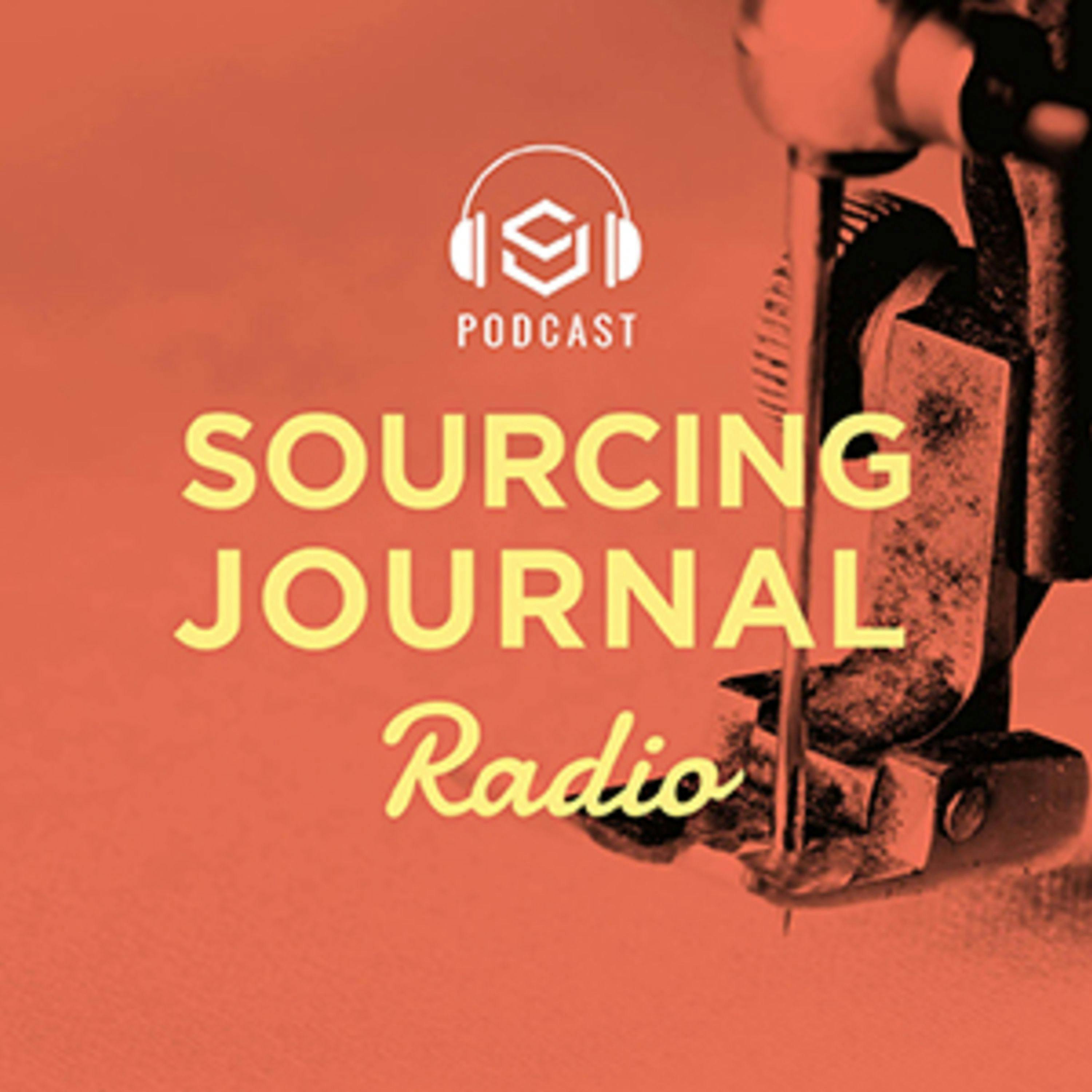
Smarter Sourcing
Where to source and how to source smarter is top of mind for the entire apparel industry right now. With the speed of change and so many competing demands, it can be challenging to weigh the options.
In this episode, we’re joined by Saskia Hedrich and Karl-Hendrik Magnus, apparel experts from McKinsey & Company. In their roles, they have been examining the business, economic and political trends that are impacting the fashion industry from the supply chain through retail, and helping to create a framework for executives looking for insights and solutions.
In addition to our discussion here on a range of topics related to their work and recent reports, McKinsey will be hosting a panel on October 17 at our Sourcing Summit in New York.
Learn more about your ad choices. Visit megaphone.fm/adchoices
21:5031/08/2019

Practicing Responsible Sourcing, One Tree at a Time
More than 150 million trees are logged each year and turned into cellulosic fabric, many from ancient and endangered forests. As a result, irreparable damage is being inflicted upon the roots connecting our world’s facilities.
In this podcast, Amanda Carr, director of strategic initiatives at Canopy, talks about the problem and her organization's efforts to raise awareness and slow the erosion of this natural resource. And Franco Costantini, managing director at Control Union, provides details on his company’s Connected traceability platform and how it helps brands and retailers establish and stick with responsible sourcing.
Canopy's CanopyStyle initiative, now in its fifth year, seeks to end logging from these threatened areas while supporting the development of alternative fibers and advancing large-scale conservation efforts. Canopy's latest initiative is ForestMapper, a web-based publicly available tool that enables all purchasers of forest products to discern whether they’re at risk of sourcing from these areas.
“Studies are showing that when intact forests are cleared or degraded, there’s a reduction in cloud cover and rainfall,” noted Carr. “We can think of forests of a sort of simple ecosystem on the planet, or we can start connecting them in our minds to all of the services they provide.”
Above all, the interactive ForestMapper tool intends to bring transparency to the supply chain so brands, retailers, manufacturers and designers can make the necessary changes to stop sourcing from these vulnerable areas.
With Connected, Control Union helps brands and retailers meet their CanopyStyle commitments by providing visibility throughout the entire supply chain. Costantini added that not only does increasing transparency help companies identify where they’re sourcing from, the aggregation of data can also bring to light inefficiencies and previously unknown cost savings.
Consumers, meanwhile, are seeking more transparency into their apparel purchases, and they are placing a higher value upon the products and brands that share this information, according to Costantini.
“We are at the moment of a cultural change,” said Costantini. “People are more aware of sustainability issues. Brands, by consequence, are able to implement their [strategies]. It’s like snowballs: The more people who are aware, the more momentum is created.”
Listen to the podcast to learn:
• The role that trees play in the health of our planet
• The scalability of some of the newest alternative raw materials
• The catalyst behind the growing awareness of sustainability—and the level of education still required
• Who carries the responsibility in educating consumers
• How to get C-Suite executives on board with making these necessary changes
• Why marketing is contributing to confusion in the marketplace
• The role that governments should have in creating protected areas
• Subscribe to the Sourcing Journal Podcast on Spotify, Apple iTunes, Google Play and Tune In.
Learn more about your ad choices. Visit megaphone.fm/adchoices
21:5509/07/2019
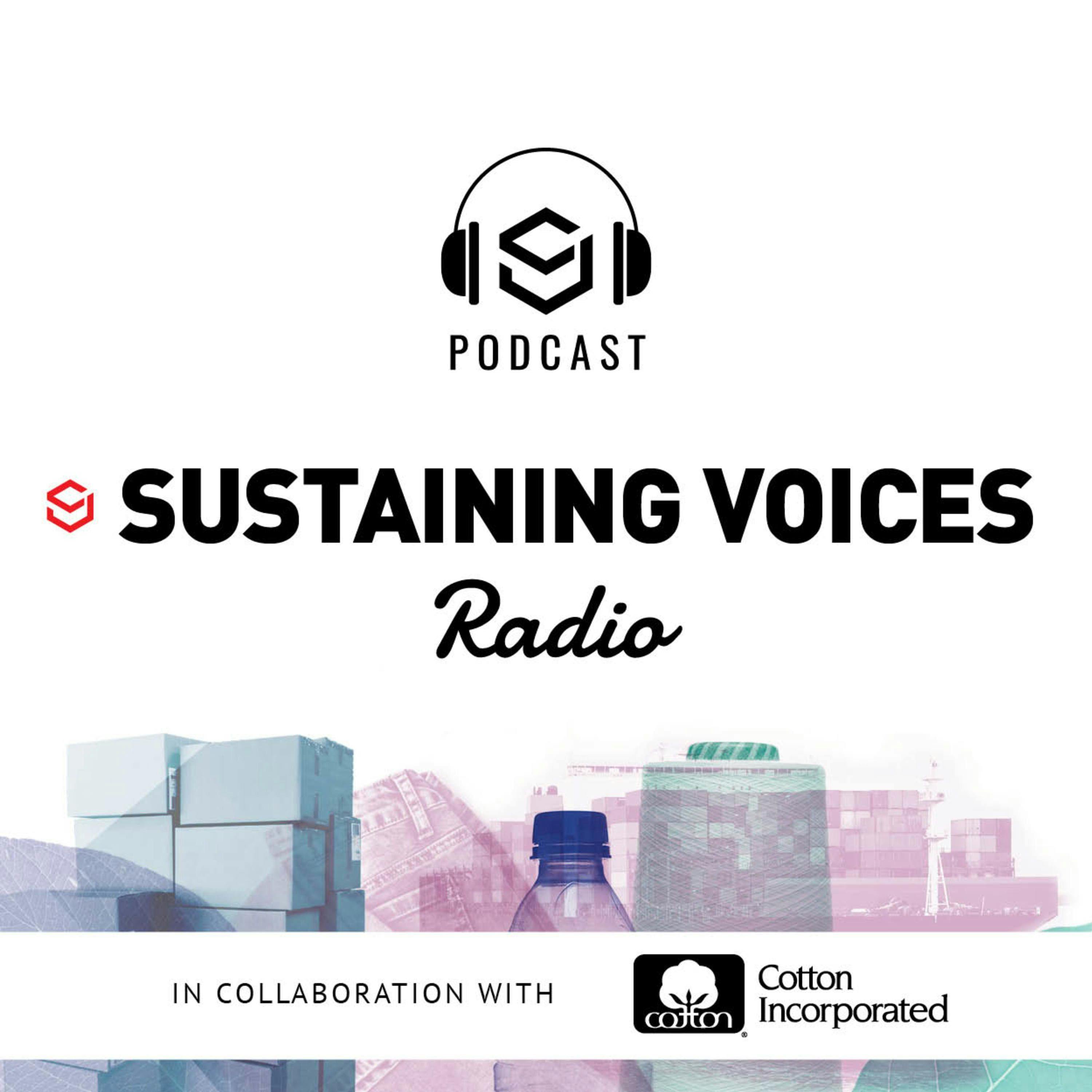
Transparency's Many Upsides
Transparency has been a hot topic in apparel recently but the industry is still struggling to gain visibility into much of the supply chain—and as a result, it is missing opportunities for improvement. A recent report from the International Corporate Accountability Roundtable outlines the benefits brands and retailers could realize if they truly made transparency a priority.
Alison Kiehl Friedman, executive director of the ICAR, joins us to discuss what’s holding the industry back, the catalysts for change and the possible rewards.
Learn more about your ad choices. Visit megaphone.fm/adchoices
22:3302/07/2019

Sourcing Journal Podcast: Tariff Workarounds & Worst-Case Scenarios
As we enter the midpoint of the USTR hearings on the proposed Section 301 tariff list, some of the now-familiar questions surrounding tariffs have once again cropped up: What will the tariffs include? When will they go into effect? What kind of fallout should we expect? Is there anything we can do?
In this special podcast, Sourcing Journal founder and president Edward Hertzman talks with AAFA executive VP Stephen Lamar about these pressing uncertainties, as well as the potential implications of President Trump’s upcoming meeting with China’s President Xi Jinping and why China could be benefiting from the trade war in more ways than one.
“Smart governments will use trade agreements to do those things that they’ve been trying to do—and they perceive they want to do for the long term—that they haven’t been able to do because they’ve got domestic political opposition,” said Lamar. “So the fact that they’re doing something in conjunction with an international agreement helps give them the cover to actually do these things that might have been difficult to do domestically.”
“We all know in the industry that the Chinese government has been subtly, and in some cases not so subtly, trying to encourage the industry—apparel and footwear and some elements of textiles—to move out of China. That’s something that’s been going on for years now. And so this … is just following along with something they’ve been trying to do for a while now,” he noted.
Listen to learn:
• The worst-case scenario of when apparel could be hit (hint: it’s earlier than you think)
• The strategic reason tranche 4 is unlikely to face the full 25 percent tariff all at once
• Whether tariffs will continue to be used as an enforcement mechanism
• Whether the holiday season will hang in the balance
• Which country you should be monitoring in addition to China and Mexico
• The De Minimis “loophole” and why it’s changing the supply chain
• Workarounds to mitigate the potential increases
• What you need to know if you intend to change your Customs classification
Learn more about your ad choices. Visit megaphone.fm/adchoices
21:4124/06/2019

Sustaining Voices Podcast: Funding Sustainability Innovations
This podcast series is a companion to our Sustaining Voices platform, which celebrates the efforts the apparel industry is making toward securing a more environmentally responsible future. This episode features Rogier van Mazijk, investment manager for Fashion for Good, and Luke Henning, CFO of Tyton BioSciences, which is taking part in Fashion for Good's Scaling Programme. Together Rogier and Luke provide perspectives on what it takes to launch and scale sustainable innovations.
Learn more about your ad choices. Visit megaphone.fm/adchoices
37:5729/05/2019

A Clear Glass Pipeline: Supply Chain Visibility
Gary Barraco, Director, Product Marketing and Business Development for Amber Road, a software company dedicated to helping companies improve margins, achieve greater agility and lower risk, discusses the benefits of supply chain visibility when managing costs, elevating quality and navigating trade issues.
Learn more about your ad choices. Visit megaphone.fm/adchoices
24:5604/04/2019

Rivet 50: Andrew Olah
Since debuting Kingpins 2004 as a small gallery-like show, Olah Inc. founder Andrew Olah has played host to the global denim supply chain at Kingpins events in New York, Amsterdam and across China.
Learn more about your ad choices. Visit megaphone.fm/adchoices
19:3118/03/2019

Rivet 50: Amy Leverton
Denim Dudes founder Amy Leverton on the denim brands and trends to watch in 2019.
Learn more about your ad choices. Visit megaphone.fm/adchoices
37:2514/03/2019

Nearshoring, Automation & the Future
Apparel brands are looking for ways to shorten development and production timelines, and nearshoring, aided by automation, could be the answer, according to McKinsey & Company. Karl-Hendrik Magnus, partner at McKinsey and Company discusses the opportunities with Reebok VP of product operations; Erika Swan, Under Armour chief supply chain officer; Colin Browne and Ramesh Fernando, CEO of MAS USA.
Learn more about your ad choices. Visit megaphone.fm/adchoices
49:0915/02/2019

Rivet 50: Alberto Candiani
Alberto Candiani, the global manager of Candiani Denim, the famed 80-year-old Italian denim mill, shares how he's pushing his family's business into a new era of sustainability, innovation and transparency.
Learn more about your ad choices. Visit megaphone.fm/adchoices
27:2825/01/2019

How Apparel Can Deliver the Right Fit Every Time
Joining us are Don Howard, executive director of Alvanon, which uses technology and body shape data to advise apparel firms on fit and sizing, and William Adler, CEO of True Fit, a data-driven company that aims to help retailers personalize the shopping experience by enabling shoppers find the right products for them.
These companies represent the variety of ways apparel is working to solve the fit issue from the design side as well as from a consumer-facing perspective.
Learn more about your ad choices. Visit megaphone.fm/adchoices
27:1218/12/2018

The Powerhouse Trends Powering Retail Today: Off-Price, DTC and Athleisure
This podcast episode focuses on apparel retail, which has had many challenges lately but is also experiencing a nice tailwind currently thanks to the healthy economy. John Kernan, managing director for retail and consumer brands for Cowen and Company, provides insights into the direction the sector is headed as both brands and retailers are attempting to shake off old processes and technologies in favor of new practices and innovations.
Learn more about your ad choices. Visit megaphone.fm/adchoices
35:2827/09/2018

The Making of a Consumer Brand in Today's Climate
For this episode, we're joined by Avani Patel of the Ember Company, formerly Trendseeder, the platform she founded in 2012 to pair fashion expertise with business acumen. The program provides startup business with the educational, advisory and networking opportunities they need in order to create sustainable brands.
Avani shares what it takes to launch a new brand in the current consumer climate, how to identify white space in the market and what new companies bring to the retail landscape that many established players can learn from.
Learn more about your ad choices. Visit megaphone.fm/adchoices
28:1319/09/2018

Source Verified
Creating a fully visible supply chain for agricultural products, like cotton, has created problems for textile producers. Businesses continue to invest in sustainable and ethical sources of cotton of a high quality, only to see markets flooded with products that have been "greenwashed" with false labels or mixed with lower quality fibers. Ultimately, cotton producers have been left wondering if sustainability can be profitable in this confusing climate.
Coming up with an answer to this problem is the next horizon in raw material sourcing and, in today's episode, we speak with two business leaders who have been able to crack the code. Using DNA tagging they've found a way to ensure consumers actually get what they pay for.
We spoke with David Greenstein of Himatsingka, one the largest cotton wholesalers in the United States, as well as chairman of the California Cotton Growers Association, Cannon Michael. Michael is also the head of Bowles Farming Company, a large producer of Pima Cotton. Greenstein and Michael are partners in the production of Pimacott, Himatsingka's patented Pima Cotton varietal that can be traced, genetically, from the cotton gin to the shelves of your local retailer.
Learn more about your ad choices. Visit megaphone.fm/adchoices
25:0906/09/2018
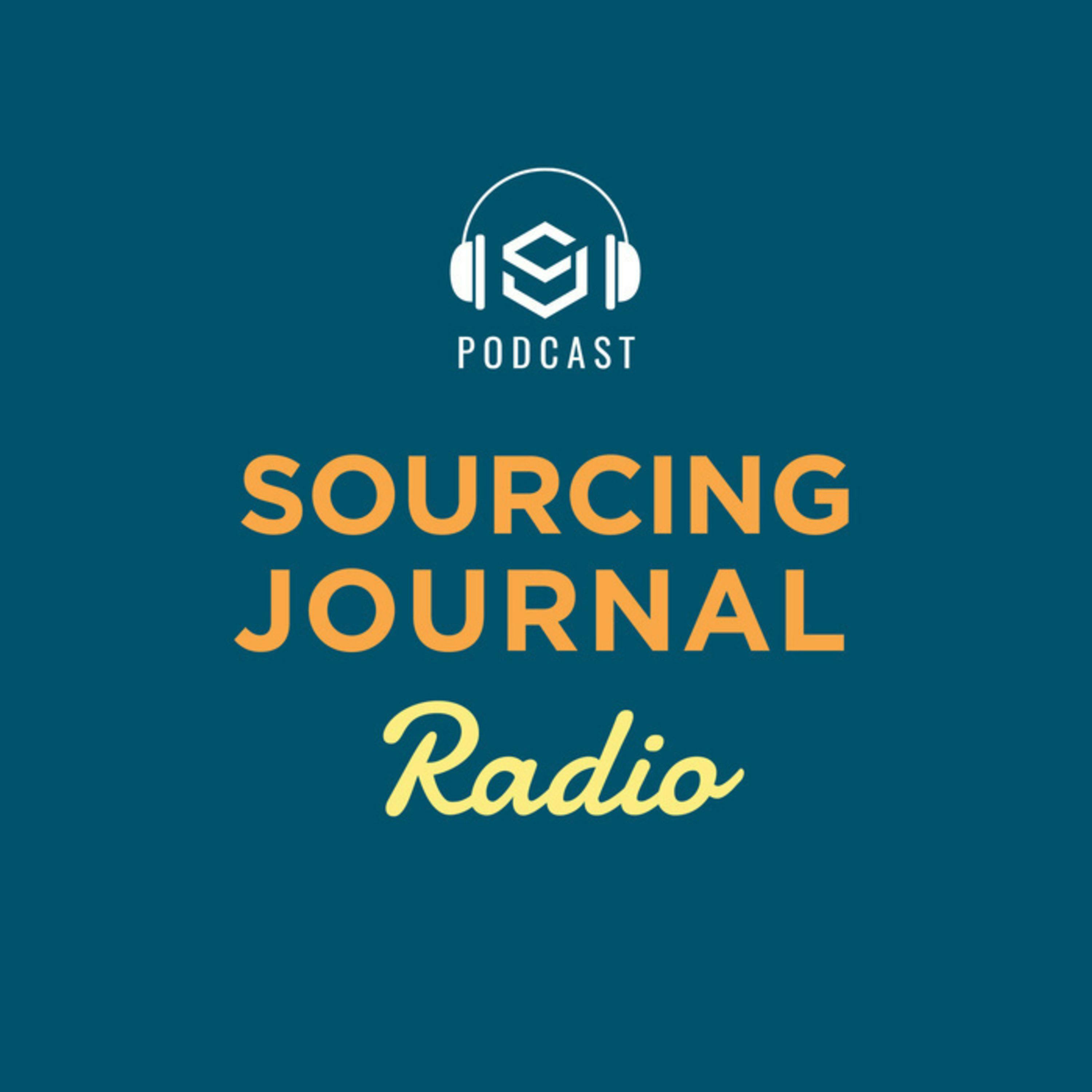
American Made
Garment manufacturing in the United States has seen better days. But, as automation technology matures, some American businesses have begun investing in local apparel manufacturing once again.
In this week’s episode, we highlight a clothing producer who has always been proudly made in the U.S.A. Dov Charney, who is best known for his first venture, American Apparel, is now building a new brand under Los Angeles Apparel. Here, he gives us a look into how his business can be competitive while manufacturing in the US.
Charney is joined by Ram Sareen, founder and CEO of Tukatech, a provider of fashion technology solutions. Sareen partnered with Charney to modernize American Apparel and has remained a powerful ally through the debut of the new business in 2016. Tukatech innovations have allowed Los Angeles Apparel to launch as a fully vertical company that specializes in speed-to-market and flexibility.
Both agree there is a future in American garment manufacturing but that it will require producers and manufacturers here to adopt the latest design and production innovations.
Learn more about your ad choices. Visit megaphone.fm/adchoices
39:2129/08/2018

Innovators & Imitators
This episode highlights what makes a disruptor a disruptor in a sea of new upstart brands from the perspective of Pano Anthos, founder and managing director of XRC Labs, an innovation accelerator for the next generation of disruptors in the retail and consumer goods sectors.
Pano addresses how retailers can better match services to customer expectations, what's considered white space today how direct to consumer brands are taking market share from established players and what company and founder characteristics get investors excited.
Learn more about your ad choices. Visit megaphone.fm/adchoices
41:0123/08/2018
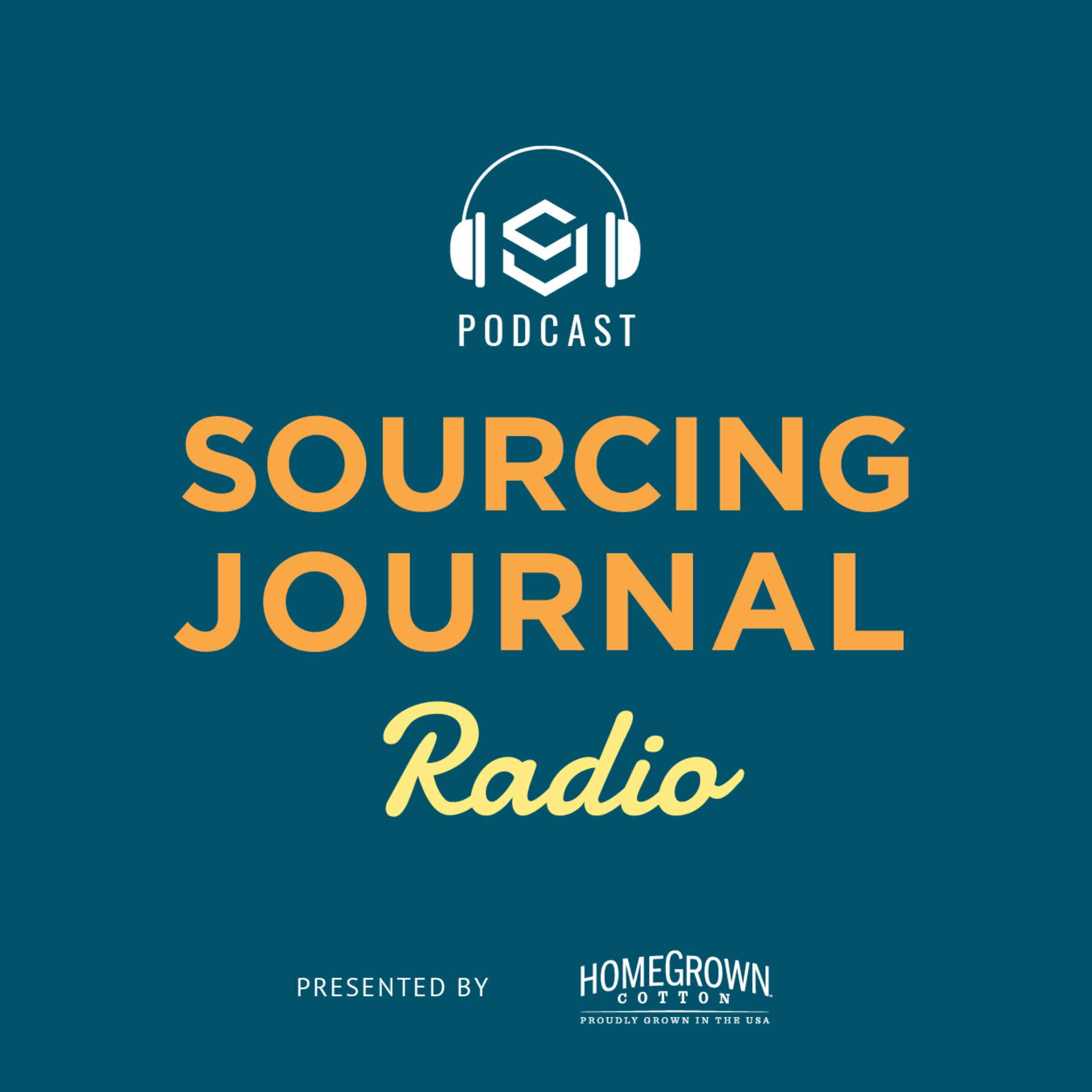
Fact or Fiction
This episode focuses on the futility of setting sustainability goals without including traceability, how doing good can also be good for the bottom line and the technology that promises to get us there.
Our guests include:
David Greenstein, CEO of Himatsingka America, one of the largest wholesalers of home textiles in the United States. David oversees the Calvin Klein, Kate Spade and Barbara Barry brands, and he introduced the world’s first fully traceable cotton under the labels Pimacott and Homegrown.
Additionally, we have Andrew Olah, founder of the Kingpins denim trade shows, which celebrate the heritage and community of this category. Andrew has also launched Transformers, a series of summits focused on helping the market become more environmentally responsible.
Learn more about your ad choices. Visit megaphone.fm/adchoices
36:0316/08/2018

Cotton Calculations
Raw materials are at the heart of so much of what happens in the apparel industry. And as a result the relative health, output and price of cotton is of particular concern for many. To supplement Sourcing Journal’s ongoing market data, this episode focuses on the dominant factors impacting cotton supply and demand, how the U.S. stacks up against other cotton growing nations and the advances taking place on the sustainability front.
Jon Devine, Cotton Incorporated senior economist, details the “volatility and uncertainty” that may lie ahead as a result of a potential change in demand in China, weather related challenges elsewhere and the escalation of the trade war between the U.S. and China.
Learn more about your ad choices. Visit megaphone.fm/adchoices
18:0508/08/2018

Sole Mates
This podcast episode will focus on how digitizing operations drives better collaboration and relationship building between brands/retailers and their suppliers. Using Crocs as a case study, Cody Bumgardner, director of product operations at Crocs and Eva Law, deputy manager at Pou Chen will share how employing a PLM system has improved the footwear brand’s ability to easily and efficiently manage products when there’s an unexpected spike in demand and improve on-time/in-full delivery enabling them to be more customer-focused and responsive to consumer demand.
Learn more about your ad choices. Visit megaphone.fm/adchoices
32:0701/08/2018
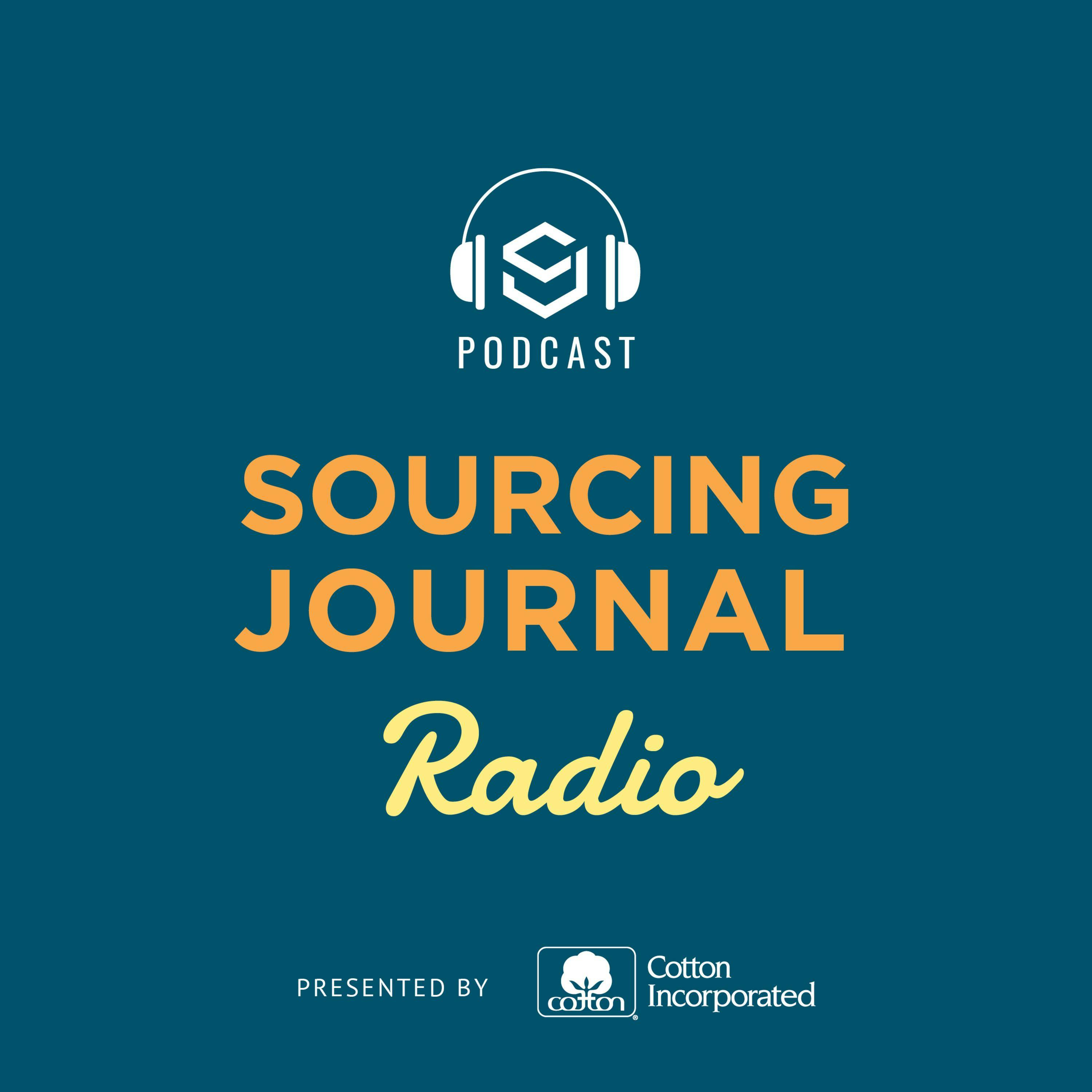
Lifting the Fog
This episode of Sourcing Journal Radio focuses the importance of transparency in the supply chain, how brands and retailers are going about it today and how it relates to other key industry initiatives like sustainability.
In this episode, you'll hear from:
MeiLin Wan, vice president of textile sales at Applied DNA
Sciences, a firm that provides tag, test and track molecular-based
supply chain authentication for traceability and transparency
Jonathan Aitken, director of RFID and digital partnerships at Avery
Dennison, which holds more than 800 patents and applications in
RFID-enabled technologies which provide greater efficiency,
reliability and accuracy to supply chains
Julie Vargas, director of digital solutions at Avery
Dennison
Nina Shariati, project manager for technology and Higg Index at fast-fashion retailer H&M
Learn more about your ad choices. Visit megaphone.fm/adchoices
38:5325/07/2018

Instant Gratification
This episode of Sourcing Journal radio focuses on on-demand manufacturing, how it works, the current capabilities and limitations, and why it’s a necessity today.
In this episode, you'll hear from:
Marleen Vogelaar, founder and CEO of Ziel, an on-demand apparel manufacturing platform and retail service that creates custom, quick-turn private-label apparel collections that alleviates inventory investments for brands and retailers
Peter Santora, the chief commercial officer of SoftWear Automation, a company that has developed robots which sew without direct human labor
Learn more about your ad choices. Visit megaphone.fm/adchoices
46:3118/07/2018
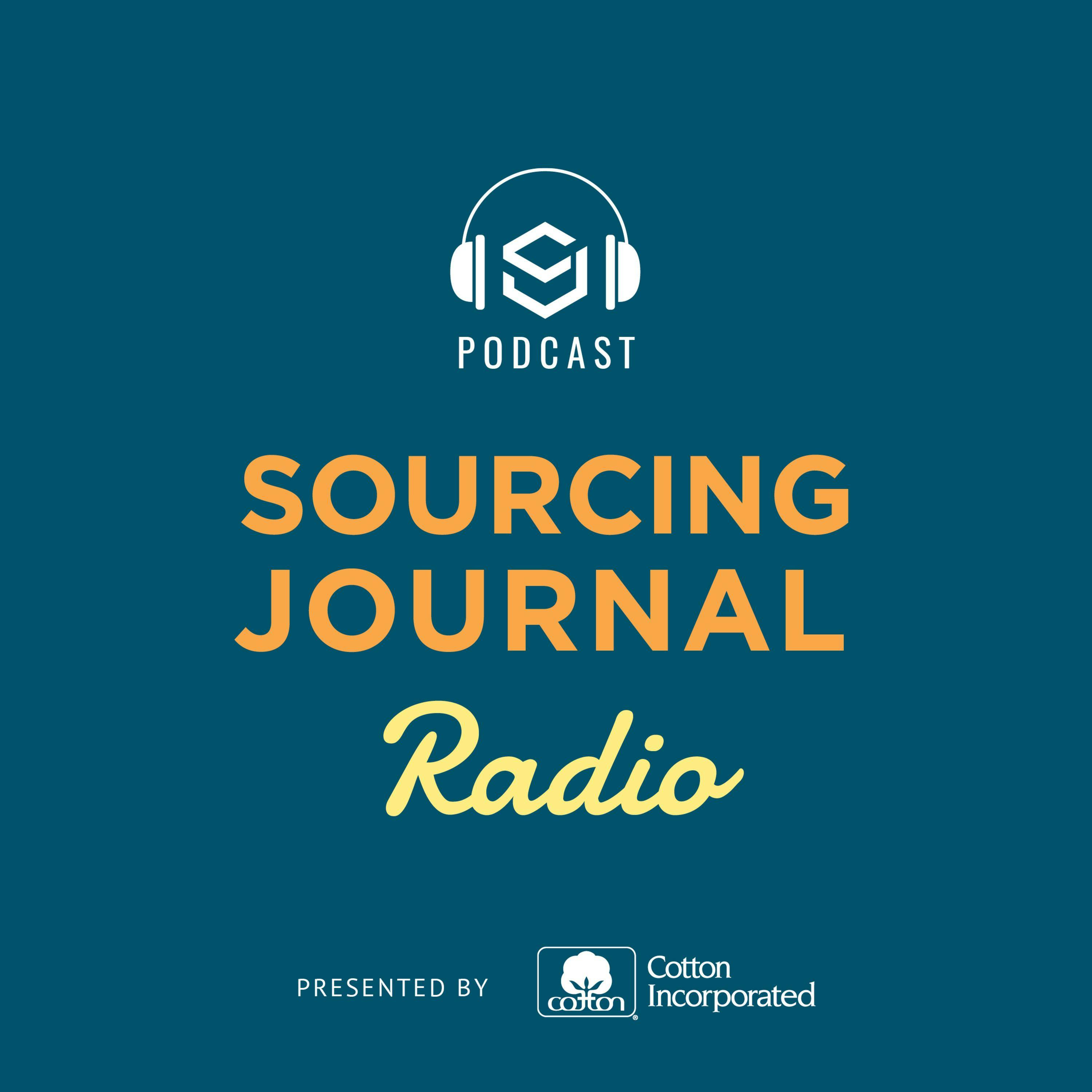
Data Dilemma
This episode of Sourcing Journal Radio focuses on data and how apparel and footwear companies can use it from both the product development and allotment side as well as from a marketing and personalization standpoint.
In this episode, you'll hear from:
Jose Chan, vice president of business development at Celect, a data analytics firm that draws insightful information from big data to improve same-store sales and increase online conversion
Guido Campello, CEO of the Cosabella brand, which offers intimates, loungewear, sleepwear and activewear and has recently expanded from solely wholesale into private label, licensing and direct to consumer
Learn more about your ad choices. Visit megaphone.fm/adchoices
35:3509/07/2018

Speed Bump
This Sourcing Journal Radio episode focuses on speed to market and how the industry’s pre-occupation with emulating fast fashion could be doing more damage than good.
In this episode, you'll hear from:
Robert D'Loren, chairman and CEO of Xcel Brands, maker of Isaac
Mizrahi, C Wonder and H Halston labels
Mark Burstein, president of sales and development and chief strategy officer of NGC Software, an apparel ERP, PLM, SCM and global software solutions company
John Thorbeck, former vice president at Timberland and CEO of GH Bass. Currently, he's the CEO and founder of Chainge Capital, which focuses on helping companies improve the first, middle and last mile
Learn more about your ad choices. Visit megaphone.fm/adchoices
39:0527/06/2018





